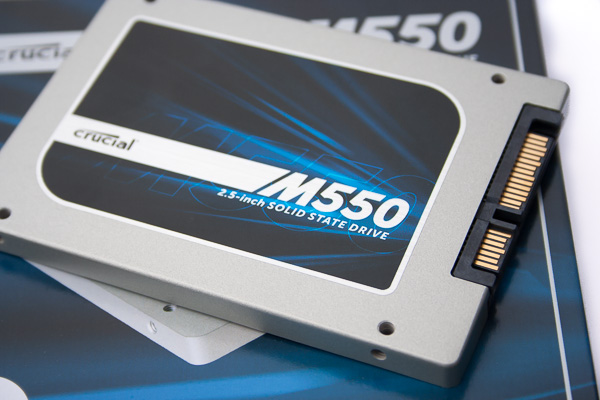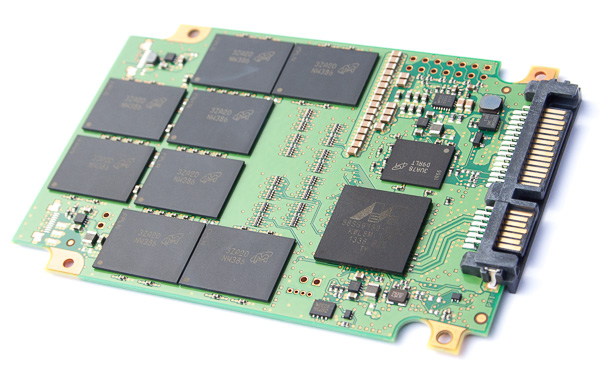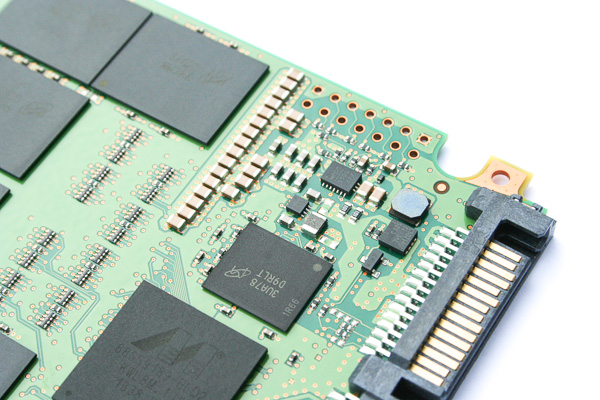The Crucial M550 SSD Review: Striking Back With More Performance
Crucial's M500 brought mainstream performance, enhanced features, and rock-bottom pricing together in one of the most-recommended SSDs of 2013. Following up, Crucial has a refined version called the M550, juiced-up for performance-hungry enthusiasts.
M550 SSD: Evolving Value Into High Performance
Our tests show that Crucial's refinements yield tangible performance improvements over the M500 SSD family. Marvell's 88SS9189 controller is responsible for much of this, though an optimized firmware helps make the M550 as fast as the quickest drives available today. The M500 was initially tuned for reliability in the face of a new 20 nm process. Mature manufacturing now makes it possible to turn the dial toward performance without giving up longevity. And so the M550 maintains three-year warranty coverage, even as it exposes more capacity and better benchmark numbers. You are asked to pay more for those privileges, though. Expect a premium of 15 or 20% over the M500's price.
Is the M550 worth that extra cash? Given the volatility of street pricing, it's hard for me to say. After we were told about the M550's higher price, I turned around and looked for good deals on existing M500s. It turns out that you can pick up a 480 GB drive for less than $240 from Crucial's own storefront. The 512 GB M550 goes for almost $340. That's a huge spread. The M550 is wicked-fast, but it's not worth an extra 40%.
Of course, we're in the throes of post-launch pricing. In a few weeks, it's possible that the gap between M500 and M550 will narrow. We might actually see it shrink to the expected 15 to 20%. But it's hard to evaluate the M550 in the meantime; we just don't know where it's going to end up relative to some very compelling competition. And so we're left to rely on the hard facts, courtesy of Crucial's website.
I'd have no problem recommending the M550 at a slightly higher price than the M500, if only because the new drive gives you extra capacity worth paying for. Take the 512 GB model, for example. That's an extra 32 GB over the 480 GB M500, worth half of a 15% bump, let's say. Superb performance justifies the rest. But a 40% spike is too severe. We'll have to count on this being a temporary state of affairs.
The two lines from Micron’s Consumer Products Group are bound to establish some sort of equilibrium. And maybe it’s not fair to use the M500’s excellent value against the M550’s top-tier performance. But if I'm out shopping for a Crucial SSD, that's exactly the comparison I'm going to make. Fortunately, the M550 is still being introduced well under the M500's prices from last April.
If you were already considering an M500, the M550 may give you reason to hold off on a purchase. For those of you planning to use one SSD as a boot drive, think about stepping up from the 120 and 240 GB M500s to a 128 or 256 GB M550 as they come down in price. Crucial's decision to swap in 64 Gb dies gives both smaller M550s a massive speed advantage, while shrinking the amount of space gobbled up by RAIN results in more useable space. Every gigabyte is precious on a small boot drive, after all.
I have a harder time pegging the 512 and 1024 GB M550s. Both sell for $100 more than their M500 equivalents, and I personally would put that money into another subsystem able to push performance higher. Crucial is aiming a little too high, possibly pushing enthusiasts into the arms of Samsung's 840 EVO. The triple-level cell-based SSD performs somewhere between the M500 and M550, and that's a good place to be.
Get Tom's Hardware's best news and in-depth reviews, straight to your inbox.
Almost assuredly, prices on the M550 will drop once the buzz subsides. Today, though, we have to run with the information we have, and I'm not willing to bet on predicting tomorrow's prices. So let's forget about value for a moment. My takeaway is that Micron's M550 remix is a shot across the bow of other solid-state storage vendors vying for enthusiast attention. The last time we saw Crucial get aggressive in the upper echelon was 2010, when it launched the first SATA 6Gb/s drive, its C300. We're happy to see the company doing business in that space again.
Current page: M550 SSD: Evolving Value Into High Performance
Prev Page Results: Power Consumption-
ikyung Heard rumors of Samsung planning to market the 850 with aggressive pricing this year. Would like to see Crucial and Samsung duke it out in pricing.Reply -
cryan ReplyHeard rumors of Samsung planning to market the 850 with aggressive pricing this year. Would like to see Crucial and Samsung duke it out in pricing.
They already have IMHO. The Samsung 840 EVO is significantly cheaper than it was at launch. It and the M500 have seemed to move in lockstep. Along the way, we've seen other manufacturers follow suit. Even Intel's 530 series, which has been on the more expensive side of mainstream products has been seen for just $140 for the 240 GB version here in the State.Regards,Christopher Ryan -
venk90 INSANELY GOOD DEAL ON AMAZON ! The 512 GB SSD is listed at 169$ incorrectly ! Grab them before they change it. I ordered 20 myself ! Will e-bay all of it or feel bad and return it to Amazon !Reply -
cryan ReplyI just splashed $250 (delivered to Oz) on a M500 480GB mSATA, eh, can't complain.
I hope Crucial continues to sell the M500 right where it is. The deals are just too good, and it'd be truly sad were Crucial/Micron to up the price on us.And they're not slow. I know it seems like they're sub par compared to some of the last few drives we've tested, but the reality is most users are never going to notice the speeds between different SSD models. The only exception is jumping from an older SATA II drive to a modern SATA III SSD. Even then, you'd need solid hardware in the system.Regards,Christopher Ryan -
Ankursh287 M500 available at $240 (amazon)..damn good drive for the price, performance difference between M500 , M550 & 840/840 pro won't visible to normal user.Reply -
Nada190 When I look at SSD's I want price to performance because I won't even notice a difference.Reply -
Drejeck Specifically for gaming which would be the best? All sort of tricks are allowed, from tweaks to samsung's magician (ram caching).Reply -
RedJaron ReplyOf course, we're in the throes of post-launch pricing. In a few weeks, it's possible that the gap between M500 and M500 will narrow.
Typo on the last page. One of those should be 550.
Happy to see Crucial with this update. I'm with a lot of people, you don't see a difference in SSD performance outside benchmarks. Give me something reasonably fast with great durability and I'm sold. With all this talk of the maturing of 20nm manufacturing, I'd love to see an M500 V2 with less overprovisioning.
-
gizmoguru Hay Tom's the chart for Sequential Reads Benchmark is labled "Random Writes", please correctReply


